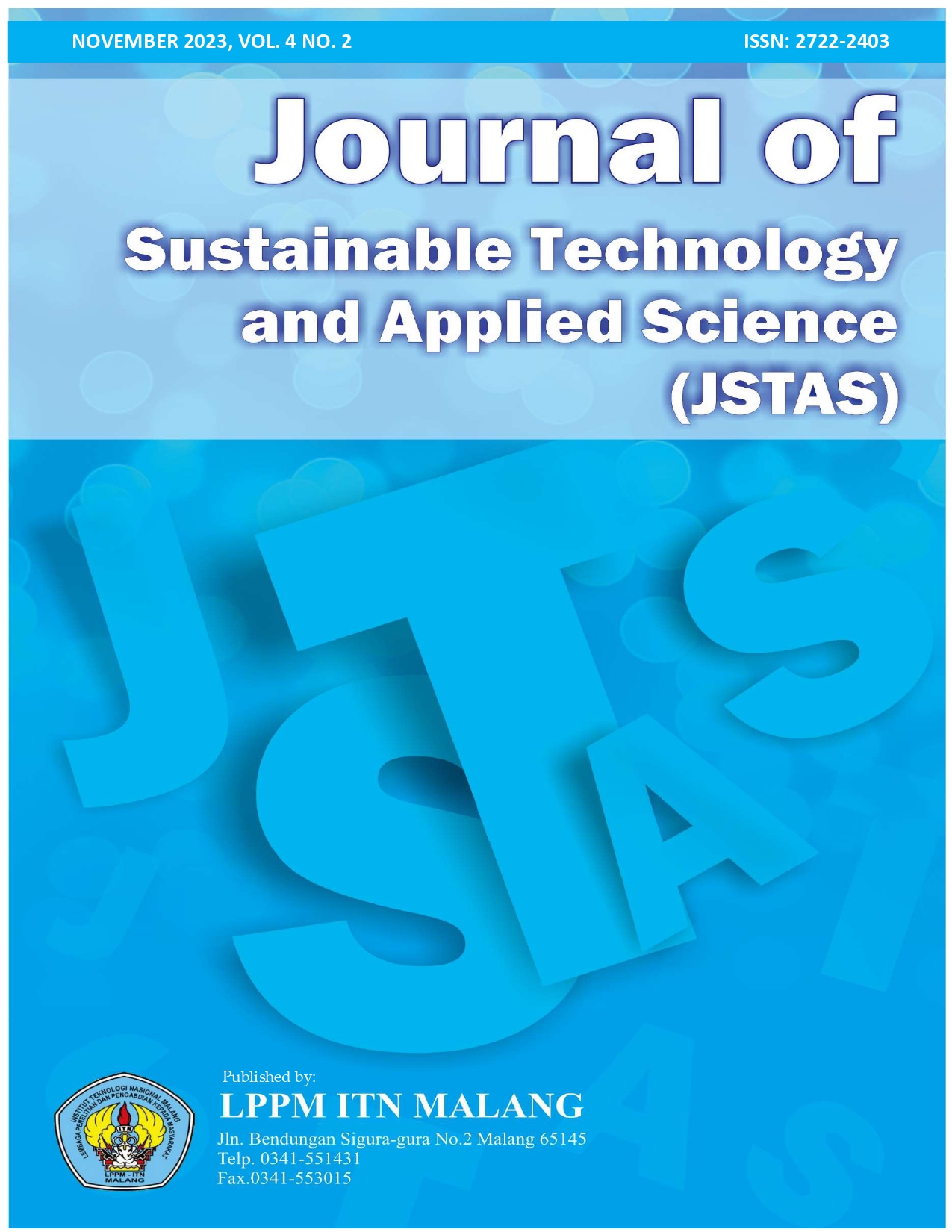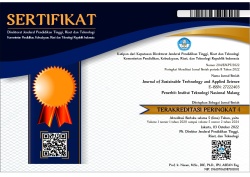MAKING LIQUID DISHWASHING SOAP FROM USED COOKING OIL WITH KOH AND NaCl CONCENTRATION VARIATIONS USING SAPONIFICATION PROCESS
Abstract
ABSTRACT. Used cooking oil is cooking oil that has been used repeatedly until the colour changes into dark brown or black. If this substance is immediately disposed of, it will pollute the environment and can reduce soil fertility. Used cooking oil as used cooking oil can be reprocessed into raw materials for non-food industries, such as biodiesel, candles, and soap. This study aims to obtain optimal variables of KOH concentration and NaCl concentration in the saponification process of making liquid dish soap from used cooking oil. The variables used in this study consisted of a fixed variable, namely the amount of used cooking oil, and the changing variables were variations in the concentration of KOH (10%, 20%, 30%, 40%, 50%) and variations in the concentration of NaCl (24%, 27%, 30 %). The research was conducted at the Microbiology Laboratory of ITN Malang. The analysis showed that the highest percentage decrease in water content reached 8.4%, free fatty acids 1.03% at 50% KOH concentration and 30% NaCl concentration. The highest percentage increase in viscosity is called 2214.25 cps, 0.15% free alkali, 1.88% high foam, and pH 11.2 at 50% KOH concentration and 30% NaCl concentration. From the study results, it can be concluded that the saponification process with variations in the concentration of KOH and NaCl used in making liquid soap affects the characteristics of the liquid soap produced.














